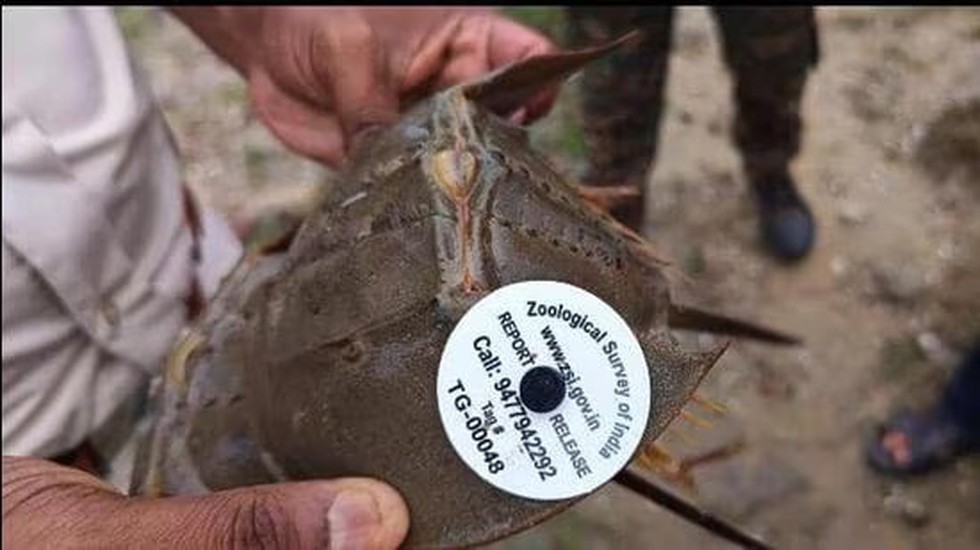About Horseshoe Crabs:
- Horseshoe crabs are ancient marine arthropods, often referred to as "living fossils," that inhabit shallow coastal waters with soft sandy or muddy bottoms. They are closely related to scorpions and spiders, not crabs, despite their name.
- These creatures spawn primarily on intertidal beaches during summer-spring high tides.
Species of Horseshoe Crabs:
- Global distribution:
- American Horseshoe Crab (Limulus polyphemus): Found along the eastern coast of the USA and in the Gulf of Mexico; listed as Vulnerable by the IUCN.
- Tri-spine Horseshoe Crab (Tachypleus tridentatus): Endangered species found in the Indo-Pacific region.
- Coastal Horseshoe Crab (Tachypleus gigas): An Indo-Pacific species found in coastal waters of India, Southeast Asia, China, and Japan.
- Mangrove Horseshoe Crab (Carcinoscorpius rotundicauda): Found in the Sundarbans mangroves of West Bengal and other parts of the Indo-Pacific.
- India's species:
- India hosts two species: Tachypleus gigas and Carcinoscorpius rotundicauda. These species are predominantly found along the northeastern coast, particularly in Odisha and West Bengal.
Conservation Status:
- Wildlife Protection Act, 1972 (India): Horseshoe crabs are listed under Schedule IV, offering them legal protection.
- IUCN Red List:
- American Horseshoe Crab: Vulnerable
- Tri-spine Horseshoe Crab: Endangered
- Coastal and Mangrove Horseshoe Crabs: Currently listed as Data Deficient.
